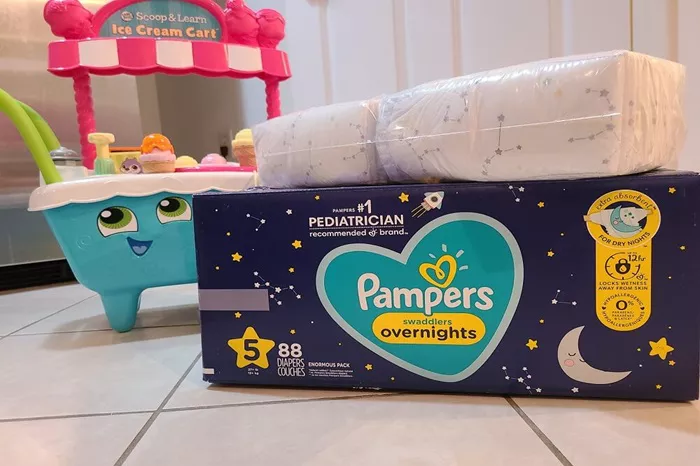When choosing diapers for your baby, you may come across concerns about the presence of chlorine in disposable diapers. Pampers, one of the leading diaper brands, has addressed these concerns, and it’s important to understand what this means for your baby’s health and the environment. This article delves into the topic, providing clarity on whether Pampers contain chlorine, how it is used, and what steps the company has taken to ensure safety.
Understanding Chlorine in Diapers
What Is Chlorine?
Chlorine is a chemical element commonly used in various industrial and household applications. It is known for its disinfectant properties and is widely used in water purification and bleach production. In the context of diapers, chlorine is often associated with the bleaching process used to make the diaper’s materials white and absorbent.
The Role of Chlorine in Diaper Production
In diaper manufacturing, chlorine may be used in the bleaching process to whiten the pulp used in the diaper core. This pulp is a key component that absorbs moisture and keeps the baby dry. The concern arises from the fact that chlorine-based bleaching can sometimes produce by-products called dioxins, which are harmful chemicals known for their potential health risks.
SEE ALSO: Do Pampers Swaddlers Have Fragrance?
Pampers’ Approach to Chlorine
Chlorine-Free Bleaching Process
Pampers has made significant strides in addressing concerns about chlorine in their products. The company uses a chlorine-free bleaching process for its diapers. Specifically, Pampers utilizes a process called Elemental Chlorine Free (ECF) bleaching. This method does not use elemental chlorine gas, which is a key source of dioxins. Instead, it employs chlorine dioxide, which significantly reduces the risk of dioxin formation.
Dioxin-Free Assurance
Pampers ensures that their diapers are dioxin-free, adhering to strict safety standards. By using ECF technology, Pampers minimizes the production of dioxins, ensuring that their diapers are safe for babies and environmentally friendly. This commitment aligns with the company’s goal of providing high-quality products while maintaining safety and sustainability.
The Safety of Chlorine-Free Diapers
Health Considerations
Chlorine-free diapers, like those produced by Pampers, are designed to mitigate health risks associated with chlorine and its by-products. For parents concerned about potential health hazards, choosing products with ECF bleaching provides peace of mind. Pampers’ commitment to eliminating dioxins means that their diapers meet high safety standards.
Environmental Impact
Environmental sustainability is a growing concern in diaper production. Chlorine-free bleaching methods not only reduce harmful by-products but also contribute to a lower environmental footprint. Pampers’ use of ECF technology is part of their broader effort to enhance the sustainability of their products and minimize their impact on the planet.
Pampers’ Commitment to Quality and Safety
Rigorous Testing and Standards
Pampers conducts rigorous testing to ensure the quality and safety of their diapers. The company adheres to international safety standards and regulations, ensuring that their products are safe for babies and meet the highest quality benchmarks. Pampers’ dedication to safety extends beyond the absence of chlorine, encompassing comprehensive testing for various factors such as absorbency, softness, and skin sensitivity.
Consumer Transparency
Pampers is committed to transparency regarding the materials used in their diapers. The company provides information about their manufacturing processes and safety measures to help consumers make informed decisions. By openly sharing details about their chlorine-free bleaching process, Pampers demonstrates its commitment to consumer trust and product integrity.
Alternatives and Comparisons
Other Brands’ Approaches
Several other diaper brands also offer chlorine-free options, using similar ECF technologies or alternative methods to ensure safety and environmental friendliness. When comparing diaper brands, it is essential to consider factors such as absorbency, comfort, and overall safety, in addition to the absence of chlorine.
Eco-Friendly Choices
For parents looking for additional eco-friendly options, there are various biodegradable and compostable diaper brands available. These alternatives aim to further reduce environmental impact by using sustainable materials and manufacturing processes. Comparing these options with conventional diapers like Pampers can help parents find the best solution for their needs.
Conclusion
In summary, Pampers does not use elemental chlorine in its diaper production. The company employs a chlorine-free bleaching process called Elemental Chlorine Free (ECF), which significantly reduces the risk of harmful by-products such as dioxins. Pampers’ commitment to safety and environmental sustainability ensures that their diapers are a reliable choice for parents concerned about chlorine exposure.
By understanding the steps Pampers takes to ensure their products are safe and environmentally friendly, parents can make informed decisions about the best diapers for their babies. With Pampers’ focus on quality, safety, and transparency, you can feel confident in choosing their products for your child’s needs.


